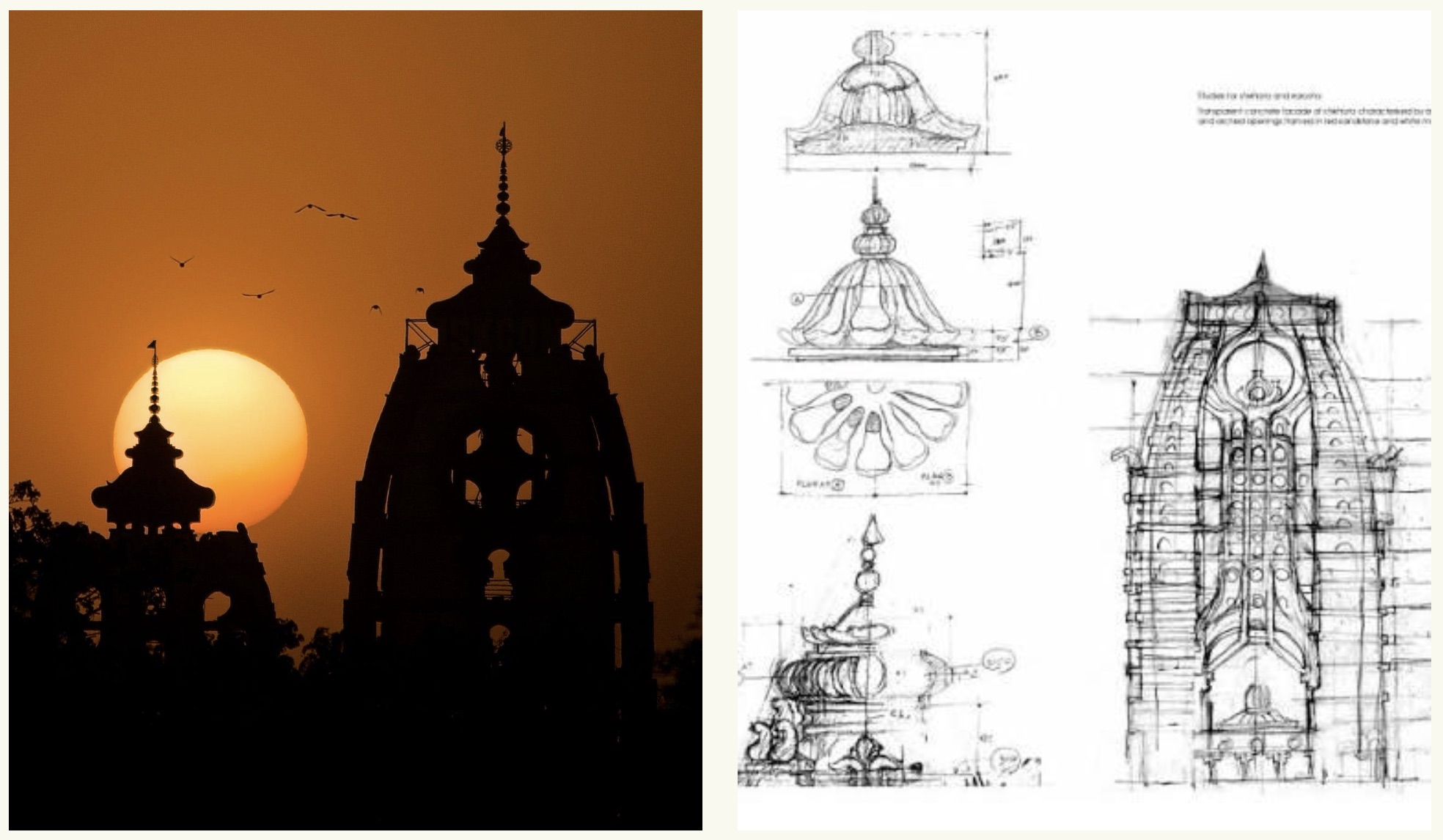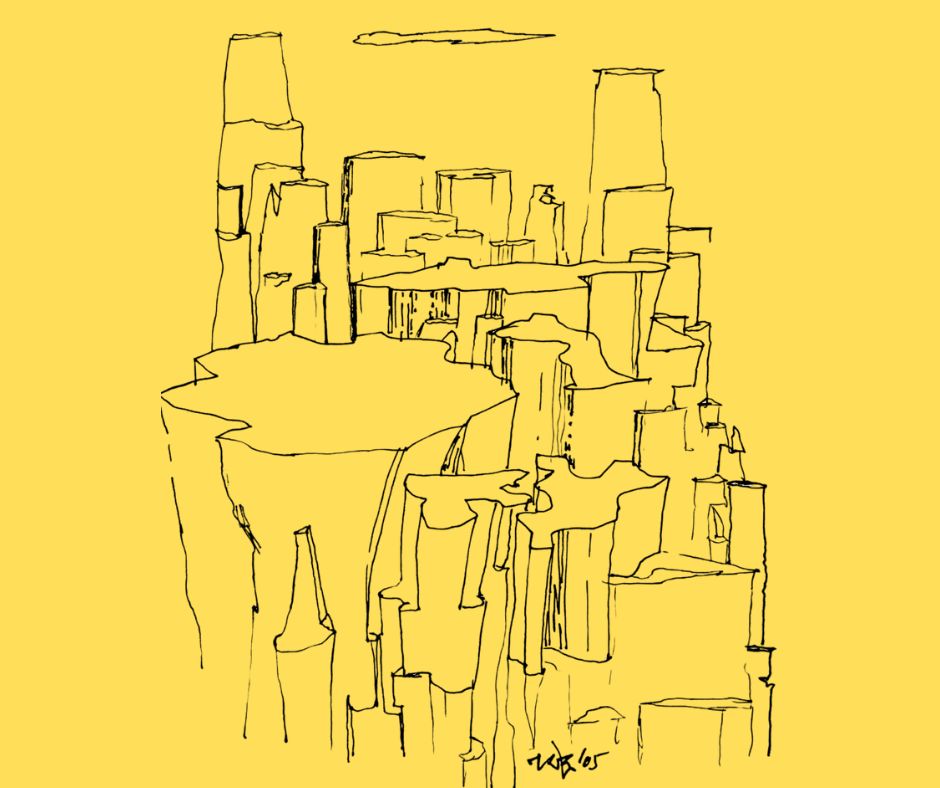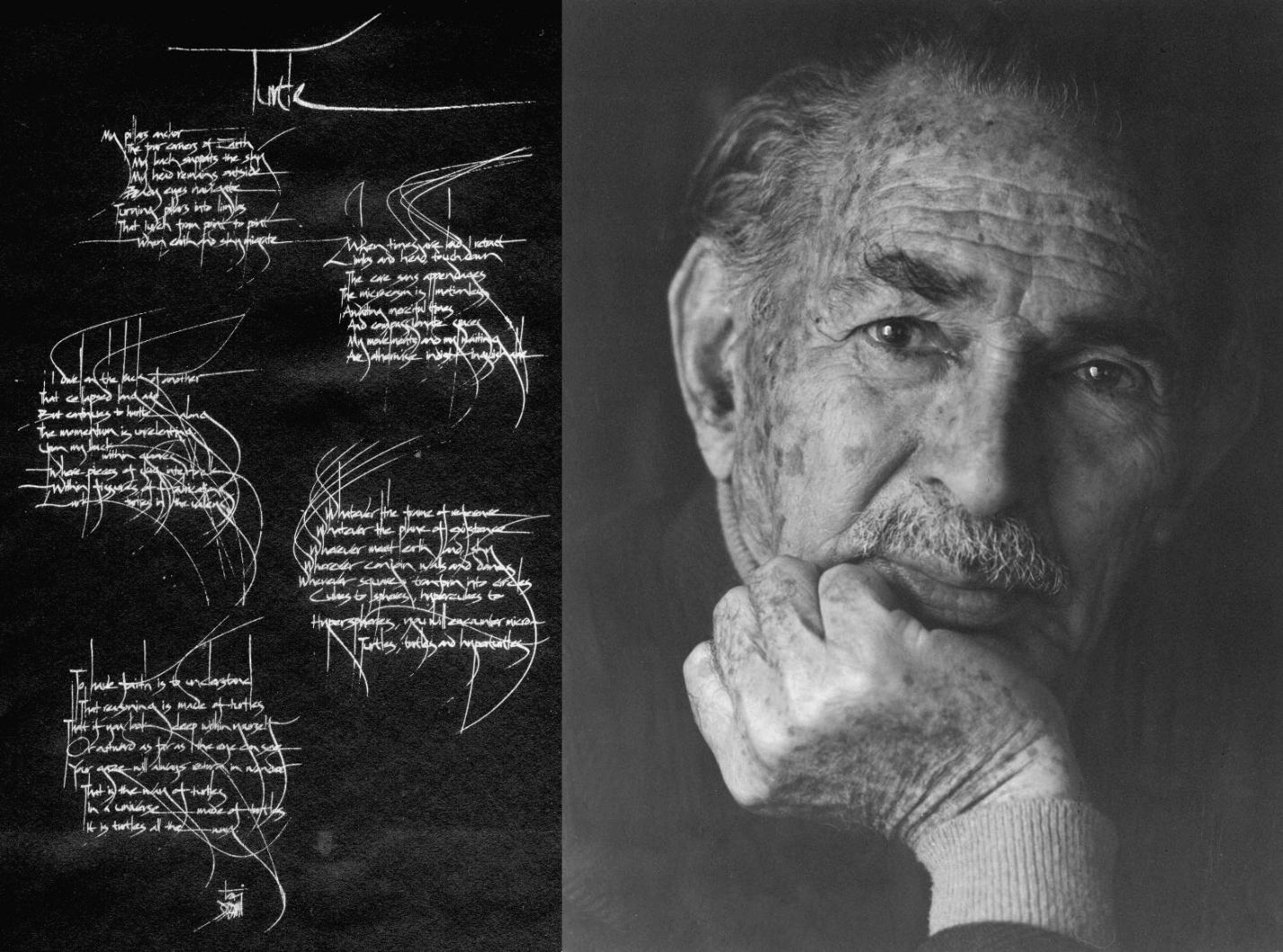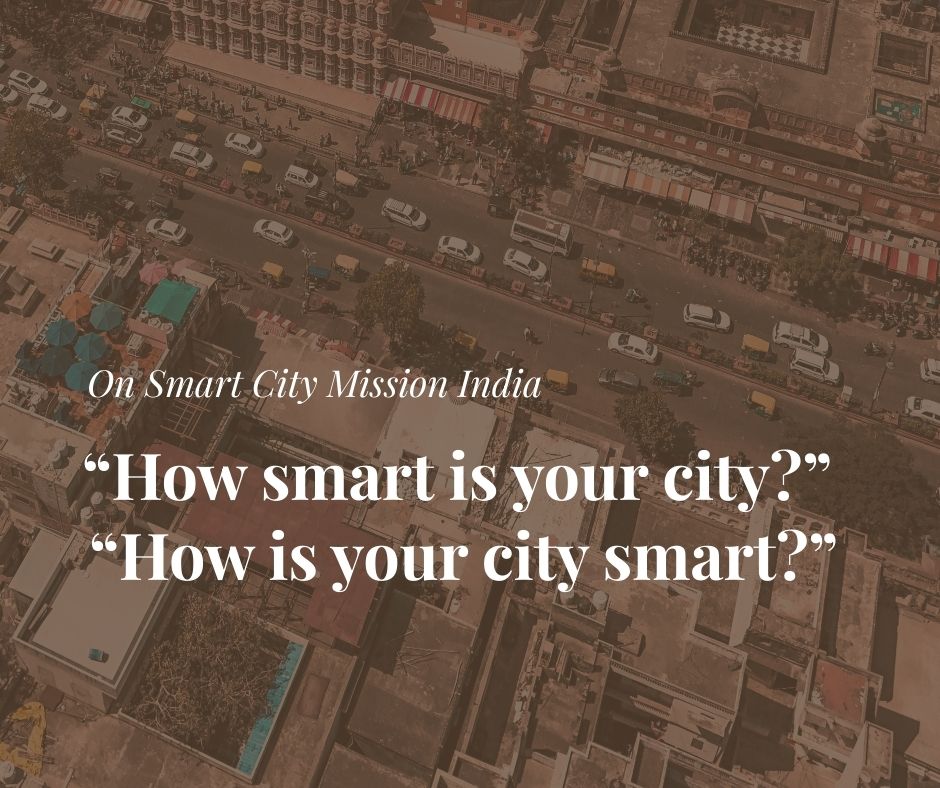Architectural Heritage in India: Conversations on Conservation, Preservation, and Restoration series by ArchitectureLive! aims to shed light on the complex issues surrounding architectural heritage in India by drawing insights from a diverse array of experts across India. It is also a way to shed light on the multifaceted challenges and emerging solutions in this critical domain. The series continues in our third conversation with Dr. Sonal Mithal.

Rajesh Advani:
In one of your papers, you mention that authenticity is a problematic parameter. Where is this thought emerging from, and why is it problematic?
Sonal Mithal:
The paper, probably 20 years old, referenced the World Heritage Site of Champaner-Pavagadh. At that time, the conservation profession focused on adding sites to the World Heritage List. One of the criteria was authenticity, which was loosely defined by the Nara Charter. It said that the building has to have evidence of what it was previously and that it shows the promise of remaining the same as it was. If these are living sites where people have aspirations of wanting to change their property, then this definition of authenticity limits their capacity. I think it is changing now because heritage sites integrate development. But authenticity, for me, remains problematic because it wants to revert to an original moment of time.
I will give you the example of Shantiniketan, which was recently listed as a World Heritage Site. When the plans were proposed around 2010–2012, the management (Vishwa Bharati University) constructed an 11-kilometre wall around the site. Tagore envisaged that this university would thrive by having active links with the outside world. The university was designed for learning to happen through exchanges with the villagers, regarding vocational training in agriculture, crafts, weaving, and so on. Possibly created for security purposes as well, the wall served to delineate the administrative boundary of the heritage area in question, which needs to be mentioned in a dossier. Now the heritage is defined by the wall. That is problematic as it conflicted with Tagore’s conception of an open university with no boundaries.
In a conversation with some teachers at the Kala Bhavan, I learnt that teaching was hands-on and collaborative. Buildings such as Kalo Bari were redone by students every year, who would work with masons and artisans from the Santhal community living in and around Santiniketan. That practice was stopped when it started being identified as heritage. These things make authenticity very problematic to me, especially in India, where such sites are living sites.
Rajesh Advani:
You also mention value as a parameter, which is subjective. I’d like to understand what value means in this context and why it seems problematic to you.
Sonal Mithal:
My views remain pretty much the same, though I’ve given the subject more thought over the past 20 years. Value comes from the World Heritage nomination dossiers and their expectations to define value. We’ve clung to this concept vehemently, almost like a religion.
If you trace the value back, it comes from one of the leading art historians in the early 1900s, Alois Riegl’s paper “The Modern Cult of Monuments.” This was during a time when Europe was focusing on heritage as an important aspect of modern thinking. He discussed the deliberate creation of monuments and their inherent value. Riegl proposed various types of value: age value, historical value, style value, architectural value, and functional value. These concepts became very central to heritage logic. There are deliberate monuments that are meant to survive; they were constructed for longevity and for showing, like the pyramids of Egypt or the Taj Mahal. But then there are the non-deliberate monuments, for which he argued that art historians can intervene and determine their value as there was no legitimate way to assess their worth otherwise.
My problem with this understanding is that, while it was relevant at the time, it needs to be reconsidered 124 years later. Reigl’s approach is that of a privileged person deciding what’s valuable based on personal knowledge—embodying a connoisseur’s logic. This is like how museum curators decide what to exhibit based on their agenda and can be exclusionary. The value of a building is assigned by an external agency, like a conservation architect. But the voice of the actual owner is hardly there in many heritage discourses.
This valuation process has become so systemic. We prepare the nomination dossiers which sometimes become an exercise in distancing communities from their own properties. We even claim we must educate people about their own heritage, and I disagree with that. I’ve stopped identifying a building’s value from an external perspective. It’s not our place to determine the value of someone else’s heritage. It’s their property.
Our role begins when people approach us, identifying something as their heritage and wanting help to preserve it, promote it, or extend its life. That’s where our expertise becomes valuable.
Rajesh Advani:
I recall a recent incident in rural Maharashtra involving a 300-400-year-old temple. The local collector decided to demolish it to make way for something modern, but it was demolished as the protestors were in the minority. I’m also citing the examples of Kala Academy in Panaji and the Hall of Nations, which present the contrast in public involvement in preservation.
What’s your view on the community’s role in determining heritage value? What do you think about these incidents?
Sonal Mithal:
When communities or people identify something as important and valuable to them, it carries more substance, weight, and resilience than when external entities such as architects project their values onto it.
Regarding the Hall of Nations, I have an unpopular opinion. I don’t think petitions alone will help. A lot of people sign the petitions and think that they have done their due to the profession. It requires a more concerted effort to understand why the building is facing demolition and explore technical and creative ways to protect it. We have to talk about the structures, their capacity, and how they could be repurposed or integrated into new projects or become an extension of a new project. We should look at it as a resource that can survive for longer.
This is a challenging task because individual architectural practices, even me, lack the time and resources for such speculative advocacy work. This is where architects have to collaborate, to contribute professionally, technically, and creatively, proposing tangible alternatives rather than simply opposing demolition. It has to be more proactive. As program chair of the conservation program at CEPT University, I feel that such programs have the capacity to provide platforms for architects to brainstorm and develop these ideas.
These are great buildings with ingenious engineering, but our arguments based solely on architectural merit or engineering ingenuity may not be sufficient. To fulfil our agenda of preserving architecturally significant buildings, we need to speak a language that others can understand.
We need to propose concrete solutions that demonstrate the building’s potential in our current neoliberal environment. We need to treat advocacy more creatively, presenting arguments that resonate with decision-makers who may not share our perspective on architectural heritage.
Rajesh Advani:
We often see conflicts between urban growth and development, which are necessary, and the preservation of heritage, which needs to be valued. Can these two coexist?
Sonal Mithal:
We can’t stop urban development. It is not a “versus” question [conservation versus development]; the problem is that it’s been viewed as such.
Conservation architects have contributed by remaining on the margins and criticizing urban development. Urban designers and planners have always included historic precincts in their work and manifestos. But there are a lot of practices and think tanks that are integrating conservation and redevelopment.
As a conservation student at SPA, when we were very few, our studios were taught by urban designers (K.T. Ravindran), landscape architects (Ravindra Bhan), and housing experts (Gita Dewan Verma), along with conservation architects (Nalini Thakur). So, conservation was already embedded in urban, landscape (ecological), and housing (social) issues.
Recently, in a very interesting interview, Brinda Somaya argued that every architect must be a conservation architect, given India’s numerous defunct buildings, especially in housing. We can’t keep building. The need is to revive these structures, which are often less expensive and align with residents’ capacities and desires, who don’t want to move.
Repair methodologies are seeping into conservation thinking and becoming more prominent. It aligns with precisely what you are saying—redevelopment. It is easy to do. Sharon Matton wrote a paper that says that architects often dislike repair work because it’s less visible. It is not a project because it is minimal and ecological—exactly what we need.
In our recent studio at CEPT conservation program, with Shreyank Khemalpure, we focused on conserving worker housing in tier 2 cities. We explored minimal repair strategies that can be aesthetic enough, be able to add new FAR, and integrate people’s aspirations. Vikas Dilawari said that this thinking is in the right direction in the way conservation can be broadened. This approach aligns with initiatives like NIUA’s integration of historic housing with development rights. This is the need of the hour. This is where conservation needs to think proactively about repairs and minimal interventions, keeping in mind the people’s aspirations.
We need to focus on mundane buildings too, because every building requires constant maintenance and upgradation, which is where conservation architects are useful.
Rajesh Advani:
Can you talk about your work on the Champaner-Pavagadh project? What were the challenges in that work, and how did you resolve these challenges?
Sonal Mithal:
This was a very old project, and we were fortunate to have a good team. My partner and I were at the beginning of our careers. The project was envisioned by Karan Grover of the Heritage Trust in Baroda, and Nalini Thakur had prepared the conservation management plan.
Working on Champaner-Pavagadh was interesting because it involved 17 stakeholders, including archaeology, revenue land, panchayat, temple trusts, works board, irrigation department, state archaeology, and forest department. These departments didn’t work in a hierarchy, and their agendas often conflicted. For example, the forest department’s annual tree planting conflicted with the archaeological site beneath. The city, uncovered by archaeologist R.N. Mehta from M.S. University in Baroda, was reburied due to a lack of resources to keep it as it is. A pitch was made in the World Heritage nomination dossier for the city to remain a preserved knowledge resource. But tree saplings were damaging it.
Karan Grover and the Heritage Trust brought together lawyers, stakeholders, conservation architects, and historians to create a new law for the site. This resulted in the Authority Act 2004, which was passed in Parliament. This act determined which laws would be superseded in various cases. This was one of the early precedents for enacting a special law for a particular site, passed through Parliament. While not replicable everywhere, it set a precedent. The law integrated development rights and the voice of the panchayat, balancing the responsibilities of various stakeholders to ensure both the development and preservation of public property or heritage.

Rajesh Advani:
You have another interesting research topic – Queering Nawabi Lucknow. Can you shed some light on it?
Sonal Mithal:
Queering Nawabi Lucknow is a book I have co-authored with Arul Paul (who teaches at Nitte Institute of Architecture, Mangalore) and is set to be published on August 22, 2024. It’s in the final phase of production. It questions the writing of architectural history, which often still relies on colonial perspectives like Percy Brown’s.
In the 1800s, after the 1857 war, the British established institutions like the Asiatic Society and Archaeological Survey of India (ASI) to document Indian buildings based on their likes and preferences or what they had written on classical and pure forms. For Lucknow, they described the architecture as “vulgar,” “debased,” “abomination,” and “bastards,” comparing it unfavorably to European classical or local architecture, not only in history books but also in travelogs. These terms kept getting reinforced post-independence.
These derogatory terms were also used for queer individuals. Very interestingly, the Nawabs of Lucknow were queer in some ways, which the British used as a reason to depose them, claiming they weren’t “manly” or capable enough to rule. They didn’t say the word queer because it did not exist at the time.
So, our book is a very deep reading of the colonial archive, extracting these words exhaustively and comparing them to queer terminology. We are making the case that this architecture was illegible and uncomfortable to the British eye, leading to its demolition. The book also makes a case for “queer architecture” and its legitimacy in architectural history, challenging the focus on “purest forms” and style-based architectural analysis. This approach is unprecedented in Indian architectural discourse. This book challenges the idea of style-based architectural history and shows that we can go beyond the pure styles and be able to do so much more.

Rajesh Advani:
Do you think awareness about art and architecture among people or communities is sufficient?
Sonal Mithal:
I think we have to tap into the potential of people’s interests, because people are very interested. We probably don’t have the right platforms. So, creating those platforms and making the work accessible is something I feel strongly about.
For example, one of the projects we worked on was the conservation of Surat Castle. But a large part of it was also about using it as a resource for education and making the architectural layers visible to the general public. The castle is a complex site with many construction layers visible in its walls. It started in 1300, was built up by the sultans in 1500, then by the Mughals, and later the British and Dutch kept adding to it.
When we removed the plaster, we saw a lot of variety in the way the mortar was made, the different bricks, and the varying thicknesses. We decided to keep these revealed as archaeological stratigraphy sections. By doing that, these have become the most photographed places in the castle, and kids are expressing interest in seeing the different kinds of bricks.
Another project we’re working on involves artwork on four underground metro stations in the heritage city of Ahmedabad. The client initially suggested lightweight artwork, like photographs, but we used it as an opportunity to bring our research work from the archives to a public place and make it visually appealing and accessible to the public.
I believe there is great potential for historians, conservation architects, and architects to present their research in a more popular and accessible manner. There is a lot we can do in this regard.

Rajesh Advani:
How do India’s heritage preservation efforts compare to international standards in terms of policy and guidelines? How do you address the perception that heritage preservation is only important for authorities and experts, not for everyday people with other priorities?
Sonal Mithal:
I don’t think it’s the general citizen’s job to be concerned about the upkeep of public heritage buildings. It’s primarily a state responsibility (if it is a public building) or even corporate organizations through CSR. People will be bothered about their personal heritage, like their homes or neighborhood community spaces.
There’s growing interest across India in preserving, maintaining, and reusing historic buildings. For instance, Vadodara Municipal Corporation tasked us with conserving the Nyaya Mandir town hall, designed by Robert Chisholm, which is a part of an urban precinct. The authorities were open to discussions and welcomed our expertise when we presented global projects as case studies. They are aware but also interested in seeking ideas about how to push the limits of such projects, and it is our job to then bring that awareness to the clients.
There is a noticeable shift when it comes to policies. It is shifting from just ASI properties to government-owned buildings. Surat Castle, for example, was owned by the state government, which used it as a courthouse, not ASI. The Surat Municipal Corporation made an MoU with the state government to take over the building, invest money, and restore it. Municipalities are increasingly interested in such projects, and funding is coming from CSR initiatives. ASI, recognizing its limitations in maintaining all its buildings, started the “Adopt a Monument” initiative to invite external funding and upkeep. They are even considering delisting some buildings, as they cannot maintain them. So, more buildings are becoming available for integration for contemporary use.
This is where India’s approach is aligning more with international practices—integrating defunct buildings with commercial use. You may call it adaptive reuse. For example, projects like the Coal Drops Yard in London or Borough Market in London. It is an old defunct railway coal depot which is now a huge public area with fountains, gardens, shopping area, and a supermarket. It is meant for people. It is thriving. Projects that transform defunct spaces and demonstrate how defunct buildings can be integrated with commercial use through adaptive reuse, are now coming up.
The idea that heritage must be preserved in its original state is becoming more subdued. There’s a growing understanding that heritage conservation needs to be economically sustainable in the neoliberal logic.
In our academic program, we’re offering a studio in Kolkata led by Professor Ayan Sen. He says that he treats conservation as a contemporary practice. It is about contemporizing the precinct, and it can be done with real estate logic for it to be successful.


Rajesh Advani:
Could you talk about your work and any ongoing research at PHC (People for Heritage Concern)?
Sonal Mithal:
We’ve been doing many things at PHC. The boundaries overlap for me as I switch between academic and professional roles. I treat academic projects as if they’ll come alive, and treat professional projects with the rigor of research.
We’re working on Surat Castle, which is ongoing. There’s a metro station coming right in front of it. The metro was going underground but elevating near the castle towards the river. Surat Municipal Corporation consulted us, and we recommended keeping it underground past the castle. The metro station in front of the castle is a very important urban redevelopment opportunity. The castle’s foreground area facing the station will be part of the third phase after metro construction. That becomes an opportunity to use that interface as an urban design exercise, integrating the footfall that will increase with the conservation site.
We’re also working on artwork for six Surat Metro stations, for which we are extensively researching. We realized that Surat has immense archival material, mostly textual, which we’re translating into visual form. We’re trying to be as authentic as possible, but at the same time, we’re trying to be as accessible to people using aesthetics that match Surat’s vibrancy.
We’re also doing advocacy projects, exploring how conservation can become an educational opportunity, especially for children. In Baroda, we’re working on conservation and urban design projects.
I’m also working on two books, which are on matters of ecology and social justice. I use personal time to do that and it draws upon my experiences of both PHC and CEPT. I’m constituted of all these three things—research, practice, writing.

Rajesh Advani:
As you mentioned children, would introducing heritage preservation and conservation topics at primary and secondary school levels help raise awareness?
Sonal Mithal:
It’s a good thought. Our office is contacted at least six times a year by schools from all over. I think there are enough historians in Surat who want to draw upon their networks of schools and bring them to the Castle to revive conversations about Surat as a historic city. So yes, there is effort at the school level. School authorities and teachers are aware and want to do this. But more can be done in terms of footfall, which is increasing, but a large part of it has to be about making this material accessible.
One thing we did—actually, Surat Municipal Corporation had this vision—was to make a movie explaining the project. It was made by a local professional filmmaker; very well done. It had actors, voiceovers, visuals, and art drawings—all integrated. It’s a 15-minute movie played before anyone visits the castle. This gives people background information, making them look for specific details during their visit. This has been very helpful in igniting interest among people.
Rajesh Advani:
Is there anything you would like to add?
Sonal Mithal:
I think that advocacy from architects and conservation architects is essential when it comes to projects which clients often see as redevelopment ones. It is very tangible because when you talk to the client who is going to invest the money, you are telling them that it [taking a conservation stance] is for their benefit. That kind of conversation is something we need to have more often. More professionals need to take up this responsibility.
The awareness with the client is more important than having a generic stance that something has to be protected because we like it. When the client comes to you, that is when you can start explaining the value and how a conservation approach might be more beneficial to them.
Dr. Sonal Mithal
Sonal Mithal is a conservation architect, artist, and educator with a Ph.D. from the University of Illinois at Urbana-Champaign. She specialises in urban revitalization and heritage conservation. Her research focuses on the performative and temporal aspects of heritage, bridging architecture, landscape, and queer studies. As co-founder of People for Heritage Concern, she consults on urban revitalization and restoration projects, notably winning the 2019 Smart City Award for Surat Castle. Sonal’s work spans architecture, landscape, queer studies, and public art, including recent metro station projects in Ahmedabad. She creates public artwork, publishes extensively, and has exhibited internationally, including at the Venice Biennale 2019 and the London Design Biennale 2021. A Graham Foundation grant recipient, she has co-authored “A Queer Reading of Nawabi Architecture and the Colonial Archive: Lucknow Queerscapes.” with Arul Paul.
Credits:
Transcribing and Editing: Geethu Gangadhar
Also Read:








